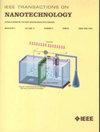Unveiling the Effect of CZTSSe Quantum Superlattice on the Interfacial and Optical Properties of CZTS Kesterite Solar Cell
IF 2.1
4区 工程技术
Q3 ENGINEERING, ELECTRICAL & ELECTRONIC
引用次数: 0
Abstract
Research on Cu 2 ZnSnS x Se 4–x (CZTSSe) Kesterite solar cells has reached a critical point, despite a significant improvement in understanding of the limitations associated with these materials. However, the conversion efficiency of CZTSSe solar cells has yet to exceed 20%, primarily due to a relatively high voltage deficit compared to other well-established chalcogenide technologies. The primary limitation for open-circuit voltage (V oc ) in CZTSSe solar cells is associated with the defect structure, including intrinsic defects and defect clusters within the bulk absorber film. Specifically, the unfavorable band structure and poor defect environment contribute to increased carrier recombination at the front interface, which is a major challenge. To mitigate the issues related to interface recombination and reduce the V oc deficit, a promising and practical approach known as quantum superlattices (QSs) has been proposed. It demonstrates CZTSSe QSs in the CZTS absorber layer. In ideal case it provides an efficiency of 37.8% with a V oc of 1.06V, which is far better as compared to previously existing chalcogeneide technologies. Also in this study a deep inside into the different types of defect engineering is provided in detail with the help of numerical simulation tool.揭示 CZTSSe 量子超晶格对 CZTS Kesterite 太阳能电池界面和光学特性的影响
尽管对 Cu2ZnSnSxSe4-x (CZTSSe) Kesterite 太阳能电池相关局限性的认识有了显著提高,但对这些材料的研究已达到临界点。然而,CZTSSe 太阳能电池的转换效率尚未超过 20%,这主要是由于与其他成熟的铬化技术相比,CZTSSe 太阳能电池的电压缺口相对较高。CZTSSe 太阳能电池开路电压(Voc)的主要限制与缺陷结构有关,包括块状吸收薄膜中的本征缺陷和缺陷簇。具体来说,不利的带状结构和不良的缺陷环境会导致前界面的载流子重组增加,这是一个重大挑战。为了缓解与界面重组相关的问题并减少 Voc 赤字,有人提出了量子超晶格(QS)这一前景广阔的实用方法。它在 CZTS 吸收层中展示了 CZTSSe QS。在理想情况下,它的效率可达 37.8%,Voc 值为 1.06V,远远优于之前已有的砷化镓技术。本研究还借助数值模拟工具详细介绍了不同类型的缺陷工程。
本文章由计算机程序翻译,如有差异,请以英文原文为准。
求助全文
约1分钟内获得全文
求助全文
来源期刊

IEEE Transactions on Nanotechnology
工程技术-材料科学:综合
CiteScore
4.80
自引率
8.30%
发文量
74
审稿时长
8.3 months
期刊介绍:
The IEEE Transactions on Nanotechnology is devoted to the publication of manuscripts of archival value in the general area of nanotechnology, which is rapidly emerging as one of the fastest growing and most promising new technological developments for the next generation and beyond.
 求助内容:
求助内容: 应助结果提醒方式:
应助结果提醒方式:


